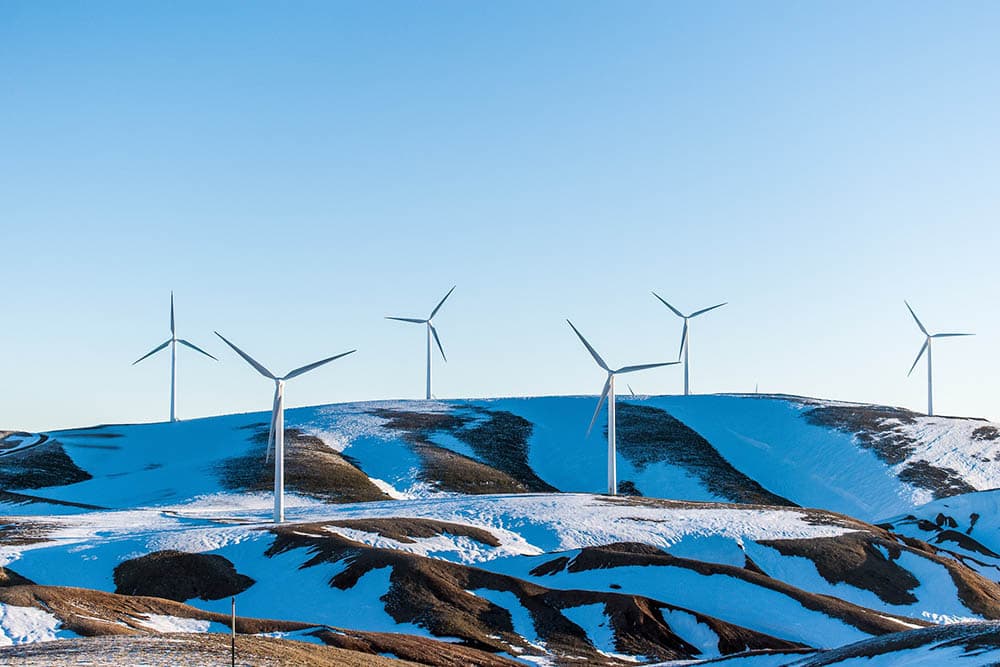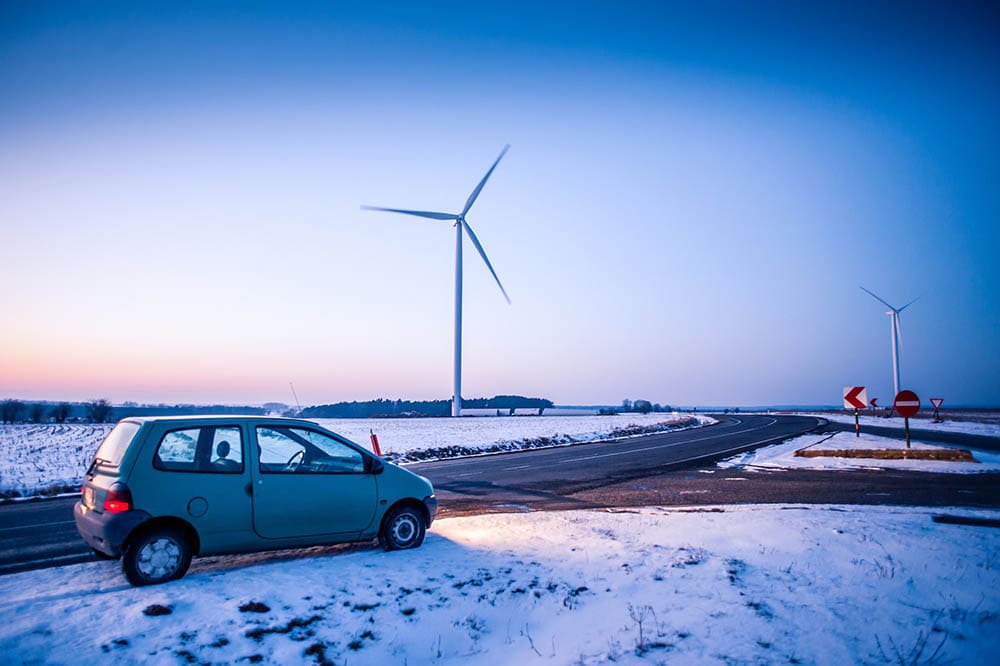Do Wind Turbines Freeze? Reasons, Facts & FAQ
-
Pete Ortiz
- Last updated:

Wind turbines have the ability to freeze, but experts prep turbines in colder locations to prevent them from freezing. Most cold-weather wind turbines are equipped with built-in heating and deicing tools to ensure the turbines remain functioning, regardless of the temperature.
That being said, not all wind turbines are equipped with this technology, meaning some wind turbines have the ability to freeze. Keep reading to learn more about how scientists protect wind turbines from freezing cold weather in select locations.
Do Wind Turbines Freeze?
If you take a plain old wind turbine and put it in freezing conditions, you will find that the turbine does not spin and will eventually freeze. Wind turbines on their own will freeze, just like anything else in cold enough temperatures.
However, wind turbines are used in incredibly cold areas, such as in northern Canada and Switzerland. These locations certainly have cold enough temperatures to make wind turbines freeze up, but these turbines still work as they should. Why is this?

Why Not?
Scientists equip wind turbines with appropriate resources and tools, depending on their location. For wind turbines that will be placed in cold environments, they are equipped with heating systems and deicing systems to ensure the wind turbines continue to move, even in freezing conditions.
Furthermore, most wind turbines designed for cold environments can handle a certain degree of icing while still functioning. In Canada, for example, wind turbines can function at minus 22 degrees Fahrenheit and have up to 20% of icing during the winter months and still work perfectly fine.
There are many mechanisms that monitor icing and heat up the turbines when needed. There are built-in heating systems, heat coatings, water-resistant coatings, and carbon fiber layers. All this technology keeps turbines from freezing in the cold, though it is up to the area’s government to decide which methods are best for that area.

Do All Wind Turbines Come with Cold Weather Protection?
Even though this anti-freezing technology is available for all turbine manufacturers, this technology is not considered necessary for all wind turbines. For wind turbines that are placed in hot environments, this cold weather protection is seen as an unnecessary expense.
In most cases, hot weather wind turbines function perfectly fine without cold weather protection. Unfortunately, there are instances when failing to equip wind turbines with cold weather protection comes at a cost.
In 2021, Texas underwent historic temperature lows. The low temperatures caused wind turbines to freeze. These wind turbines would have functioned as normal if they had cold weather protection like wind turbines found further up north. Under normal circumstances, the wind turbines in Texas function perfectly fine, but they simply were not equipped to deal with intense lows.
It is important to note that wind turbines weren’t the only power sources that struggled during this time. All other major forms of energy generation failed during this catastrophe, leading to major power outages state-wide.
Final Thoughts
The instance in Texas begs the question if all wind turbines should be equipped with cold weather protection. From a financial standpoint, cold weather protection for southern wind turbines is completely unnecessary. The financial standpoint is not the only one that should be considered, as the incident in Texas proves.
In most of the world, wind energy is not the primary form of energy generation. Even in Texas, only 13% of energy generated is produced from wind turbines. Even if the Texas wind turbines were equipped with cold weather protection, they still would not have prevented major power outages during this time.
This seems to suggest that until wind energy becomes a more popular energy generation solution, it makes sense to save money by not offering winter protection for southern turbines. However, northern turbines especially need winter protection to ensure they work all year round. Not to mention, turbines should be backed with cold weather protection if they are a main source of energy generation.
Featured Image Credit: Christian Wiediger, Unsplash
Contents



